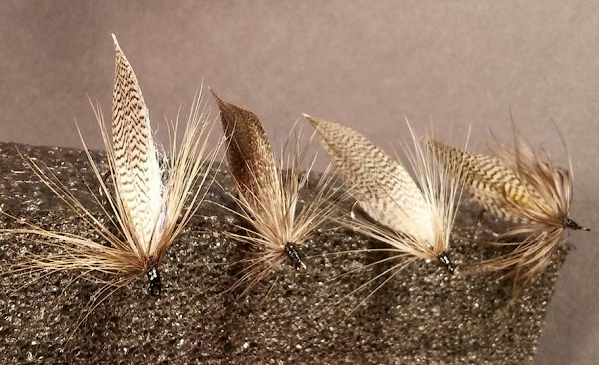The Must- Have Hornberg
Over the past few seasons, I've noticed the old Hornberg Special popping up.
This vintage fly dates back to the 1920's, and was first crafted by Wisconsin conservation officer, Frank Hornberg. Originally tied with stiff neck hackle and considered a dry fly, it eventually fell into the streamer niche as a baitfish mimic.
Just WHEN it went from dry fly to streamer I don't know, but Joseph Bates includes it in his book, "Streamers and Bucktails: The Big Fish Flies," first edition, 1979.
I would guess it has probably been in the streamer wallets of fly anglers since the 1950's, and I personally think it makes a much better streamer than dry fly. The style and manner of enclosing the hook within the tall wings is unique, and is generally called the "killer style..." It is something many anglers are unfamiliar with, and it first came out of New Zealand.
Just WHEN it went from dry fly to streamer I don't know, but Joseph Bates includes it in his book, "Streamers and Bucktails: The Big Fish Flies," first edition, 1979.
I would guess it has probably been in the streamer wallets of fly anglers since the 1950's, and I personally think it makes a much better streamer than dry fly. The style and manner of enclosing the hook within the tall wings is unique, and is generally called the "killer style..." It is something many anglers are unfamiliar with, and it first came out of New Zealand.
In the opening foto, I used goose and duck flank feathers for the main body wing. Some have sparkle dubbing as an underwing, others use bucktail as was applied at first. Either works, but I confess I like sparkle dubbing. The hackles are deliberately long, sourced from domestic saddles, and tied in as soft hackles. That stays with the streamer vibe intended for these.
In all of these, you'll see there are no jungle cock eyes. That is traditional on this pattern, but it fishes fine without them, and they're expensive - which drives the cost higher.
In the Guinea Hornbergs above, you'll notice I lacquered the tips of the wings in the original fashion. In later years, that step was dropped and "un-lacquered" versions became synonymous with the eastern U.S.
But the pinched and cemented empennage was part of the inaugural design, so I include it. The lacquer also adds some strength to that part of the fly, and it can be re-applied once it starts to wear.
A good many flies you'll see are little more involved than than slipping on a bead and winding on some fuzzy stuff. But not these.
They have a certain elegance to them, as you can see in the pictures. There is the clamshell tented wing, the play of light and color in the underwing, that lacquered wing-tip.... well, it is all very sublime.
This means people might like to try them, but they may shy away from tying Hornbergs for themselves. But once you have them in your hand you get it - they are a satisfying piece of work.
Interestingly, the fish I have had the most success with on my Hornbergs are bigger panfish. Solid red breasts and bluegill seem to like them, which surprised me. This can be partly credited to the fact that I fish mostly in waters that support such fish. But I reckon that if THOSE fish will take them, bass will also take a whack at them!
--------------- <~~> ---------------
Do you have questions, compliments, or suggestions?
Do you want to add any of the patterns seen here to your fly or tackle box?
Do you want to add any of the patterns seen here to your fly or tackle box?
If so, email me at...dahutist@gmail.com
If you appreciate a no-drama, no-hype Facebook group, follow this link to join us at:Palmetto Fly n Fish
Thanks so much for reading, and...
Tight Lines,
Dave Hutton
© All rights reserved, David Hutton/Palmetto Fly N Fish 2023





Comments
Post a Comment